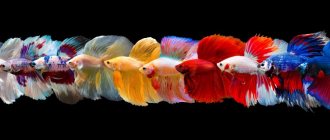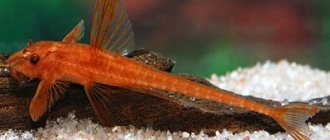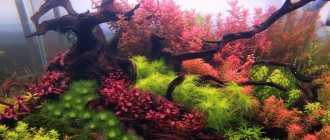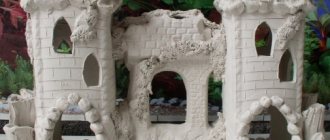Tropical water hyacinth has become famous for its beautiful blooms, turning an ordinary home pond into a favorite place to relax. Its flowers are similar to garden oriental hyacinths (hence the name), but there are no related connections between them. The plant is also known by another name - eichornia excellent (beautiful) or thick-legged. In Asia, America and Africa, water hyacinth is called the “water plague” because it grows strongly in hot conditions and covers bodies of water so tightly that you can walk on it without falling into the water. However, in cool latitudes the plant is readily welcomed - it does not grow so seriously here, and its unique filtering roots purify the water from all harmful substances.
Description of hyacinth
Botanists classified the annual Eichhornia crassipes as a Pontederiaceae. The plant’s homeland is calm reservoirs of the tropics and subtropics, rich in organic matter. You can recognize it by its smooth, curved and thick leaves with smooth edges up to 18 cm in diameter, forming a rosette of 4 to 8 pieces.
The shoots of water hyacinths, sometimes reaching two meters in length, spread and float on the water thanks to the porous, fleshy base of the leaves. When cutting this spherical swelling with a diameter of 4 to 9 cm, its spongy tissue filled with air is visible. Such a float holds leaves and flowers on the water surface, despite the branched heavy root , which is completely submerged under water. The powerful black root can grow up to 1 m in length.
If the depth is large, the plant floats in the center, and in shallow water it takes root in the mud. blooms in August. One eichornia of a blue, pale pink, lilac or dark lilac hue can bear up to 35 fragrant flowers, but the standard number is 6-7. Unfortunately, you can admire their beauty for only a day. But when there are many flower stalks and they continuously bloom, the process is fascinating.
To ripen the seeds, the floating plant forms a box 1.5 cm in size, in which there are a lot of them. When opened, the seeds are released into the water. But if they germinate and produce new shoots in the tropics, they do not survive in colder countries. Therefore, water hyacinths are put away in warm greenhouses and aquariums for the winter, and with the arrival of spring, new seeds are planted.
Features of growing Eichornia in an aquarium
Water hyacinths are suitable for spacious aquariums on an ongoing basis or for the overwintering period. The main thing is that there is enough lighting, warmth and an abundance of macroelements. To grow Eichornia in aquariums, you will need to install lamps and an oxygen aerator. It is important that the plant’s leaves do not reach the lighting fixtures, otherwise it will burn; therefore, the container does not need to be filled to the brim with water; you need to leave about 30 cm to the top.
Hyacinth needs organically saturated water, obtained by adding peat and sand to the bottom soil, as well as populating an artificial reservoir with living inhabitants. To root eichornia, you will need at least 10 cm of soil, but the plant lives well even when floating freely in the water column. When kept at home, water flowers require:
- temperature regime - not lower than +23 and up to +28°C, and for the flowering period it is necessary to raise it by another 2 degrees;
- acidity – from 6.2 to 6.8 pH;
- additional lamp with a power of 3 kW/sq.cm;
- daylight hours for 12 hours;
- calm standing waters without drafts.
If the conditions are met, water hyacinth grows extremely quickly, and in order to control growth, it is recommended to promptly cut off the shoots emerging from the axils of the leaves and periodically plant larger ones. When grown in aquariums, it is necessary to regularly fertilize the plants.
Useful tips for beginners
Despite the resistance of water hyacinth to various diseases, if agrotechnical rules are violated, it can die (both during storage and in open water) or change its appearance. The following external signs may indicate this:
- lack of flowering;
- loss of leaves in winter;
- rotting of the root system and leaves during storage;
- curvature of peduncles.
It is important to remember that this plant is very heat-loving and does not like drafts , so if you plant it at low temperatures and do not provide protection, it will most likely die.
You should not plant water hyacinth in running water, as the pedicel will most likely end up too thin and weak. A pond with standing water would be ideal for it.
In order not to spoil the flora of the reservoir, it is necessary to carry out regular thinning. It is important to know that in 1 season this flower produces up to 200-300 shoots , which is quite enough to completely “clog” the pond in the shortest possible time. It is advisable to perform this procedure once every 2-4 weeks.
If during the wintering period water hyacinth begins to lose leaves, then, first of all, this is a sign of a lack of light. For normal functioning, he needs 12-14 hours of daylight. Therefore, it is necessary to provide additional lighting, for which LED or fluorescent lamps can be used.
Reference ! The root system of Eichornia does not tolerate exposure to direct sunlight, so during wintering it is advisable to cover it, for example, by covering it with plastic wrap.
A second reason for leaf loss during storage may be a lack of nutrients. To replenish it, you can use any organic fertilizer - chicken droppings, wood ash, mullein and others. The use of ready-made mineral complex compositions is completely acceptable .
Water hyacinth for outdoor ponds
Although water flowers are considered exotic, they are not uncommon for ponds in our countries. They take root well in both natural and artificially created reservoirs. Eichornia are planted in the southern regions in May, and in the north in early summer. For the development of the plant, the following are important: high temperature, long-term lighting and an organically saturated reservoir. However, warm, sunny summers do not always occur.
If you purchased a young hyacinth, any open pond will suit it, preferably with algae and fish. It is not advisable to plant it in a clean reservoir - the plant will not have enough nutrition. Bottom silt, mineral additives and humus are important in the spring, but in the summer there is no need for additives - insects and plants enter the water, as a result a nutrient medium is created.
The flower does not require special care - you just need to trim the new shoots so that the plant does not occupy more than 50% of the entire reservoir.
Reproduction of Eichornia
At sub-zero temperatures, Eichornia can only exist in peat aquariums, winter greenhouses or in pots with constantly moistened peat. Place the plant in the container, pour water into it or water it regularly. Sometimes, instead of peat, you can use a garden mixture of sand and soil. It is necessary to place the plant in a warm environment and maintain at least 11 hours of light - for example, place the container on a south-facing window.
To overwinter at home, it is necessary to leave the plant only with a long, at least 10 cm, healthy root, so that there is a chance of keeping the hyacinth alive until summer.
The death of a floating flower can be caused by cold, disease, or too dry air in the room. The plant must be promptly transferred to better conditions and provided with sufficient water and light. Otherwise, the leaves will first darken and die.
Eichornia reproduce vegetatively, forming shoots similar to strawberry ones. The reproduction process under good conditions proceeds rapidly. Growing from seeds did not find a response, since in a more northern climate the seeds do not have time to ripen.
Application of the plant
- Hyacinth can be used fresh, dried, whole, chopped or ground. The roots are usually discarded.
- Eichornia is chopped and fed directly to animals. However, it is not very palatable due to the presence of oxalate crystals in the leaves, which cause oral irritation in livestock.
- The flowers are used to create a tonic for horses, which is rubbed into their skin.
- If the plant is well steamed or boiled, the flower stems, buds and young leaves can be eaten. Hyacinth is an ingredient in Taiwanese and Javanese cuisine.
- The plant is rich in carotene.
- The species is considered an excellent fragrance for perfume and cologne products.
- After processing, euchronia is used to make paper, rope, bags, and even furniture.
- The species absorbs lead, mercury and carcinogens, thereby cleaning your pond.
- Because of its amazing biomass, it can be used to create fuel.
How to ensure that an aquatic flower survives the winter
Not all water hyacinths can survive winter even in warm home conditions. Many people notice that immediately after being moved to an aquarium or greenhouse, the leaf plates begin to turn black and the plant dies, although all the conditions for the flower are met. This means that the eichornia was removed too late, and it had time to freeze.
To prevent this from happening, you should not wait for cool weather - better sooner than later.
With the first signs of a drop in air temperature to +15°C, it is recommended to take the plant into a warm place.
Even if the decrease occurs only at night, there is no need to take the eichornia out into the pond to “warm up” during the day - this is serious stress for the plant.
You need to remove the eichornia into an aquarium filled with water in which the flower lived, and place it in a place prepared for it. There should be no heating devices nearby - this will dry out the leaves. You should also not cover the container with a lid.
Water hyacinth, like a pump, is able to quickly suck out all harmful substances from water, so people like to plant it in their aquariums and ponds as a natural cleansing filter. It is able to absorb even petroleum products - it is a nutrient medium for the plant, and it copes well with filtering functions, improving the condition of water even in abandoned reservoirs.
If for some a floating flower is a “green plague”, then in other places it is a beautiful and original decoration that brings great benefits.
Protection from diseases and pests
One of the main features of Eichornia is resistance to diseases .
If its leaves have changed color or drooped, then the only reason is improper care. On the contrary, water hyacinth is considered a rather aggressive plant, which, if it grows uncontrolled, can destroy its neighbors.
The only danger is root rotting during wintering . To prevent this, it is necessary to plant the plant on a small floating raft.
In addition, for reasons currently unknown (quite possibly due to its toxicity), it is practically not attacked by insect pests. The only thing that can settle on it is aphids, which can be quickly eliminated with the help of insecticides.
Horsetail tincture also works well against this insect. It's quite simple to prepare. To do this you need :
- pour 5 liters of hot water into 500 g of raw materials;
- leave for 24 hours;
- dilute with water in proportions 1:4;
- spray the water part of the plant with a spray bottle.
Therefore, in this sense, eichornia is an ideal element that can be used in landscape design when decorating artificial reservoirs.











